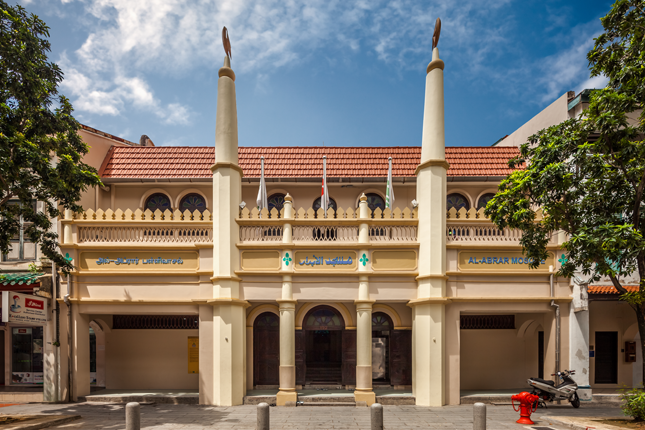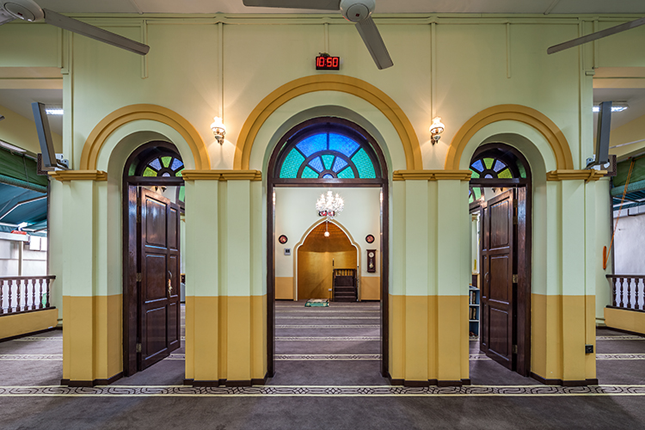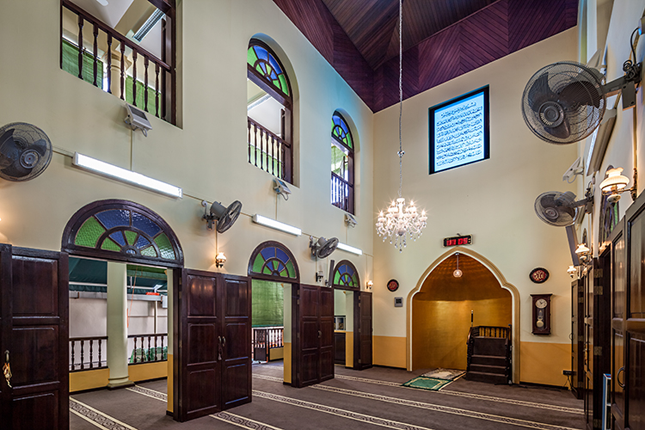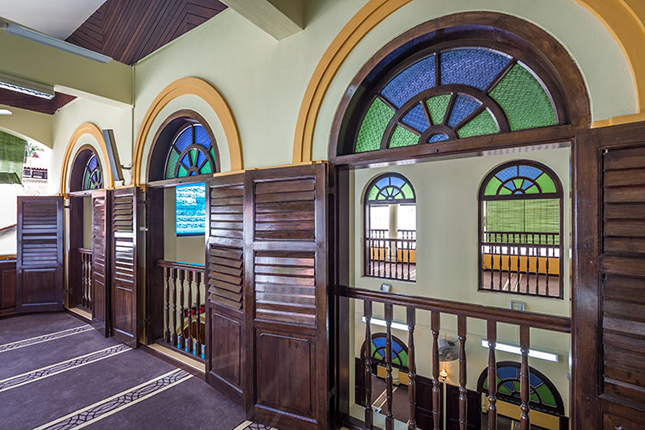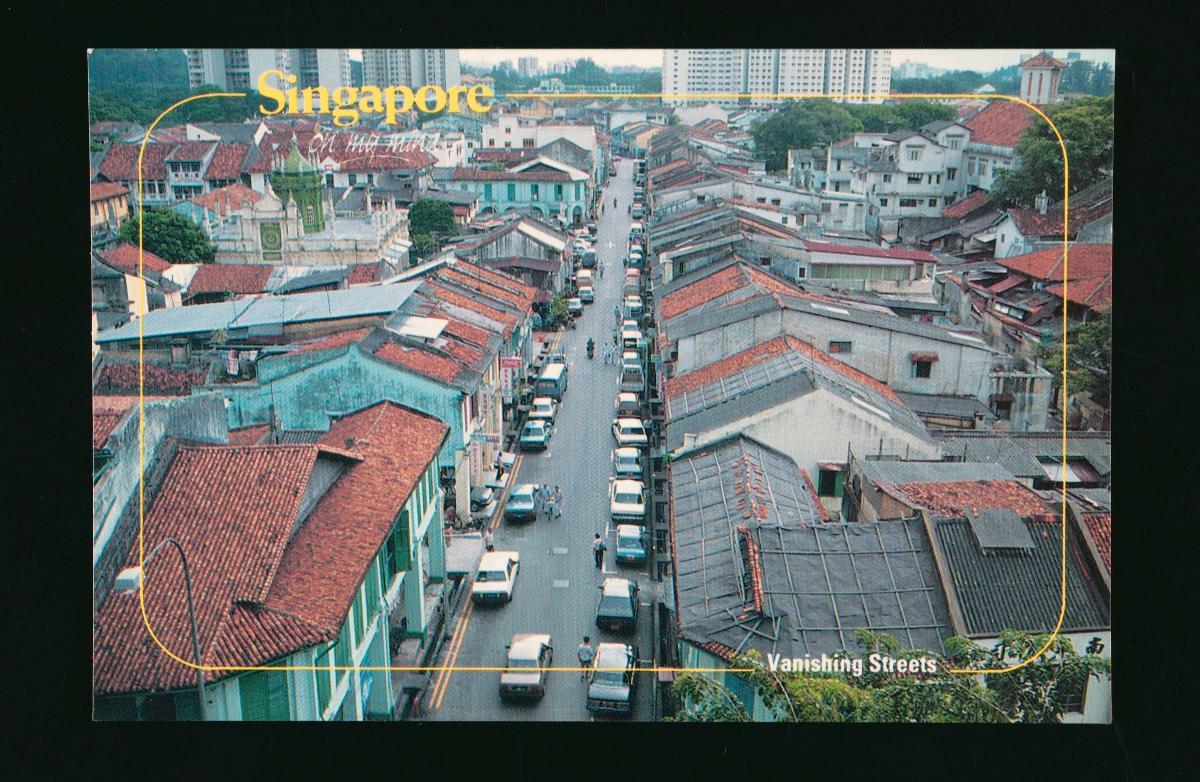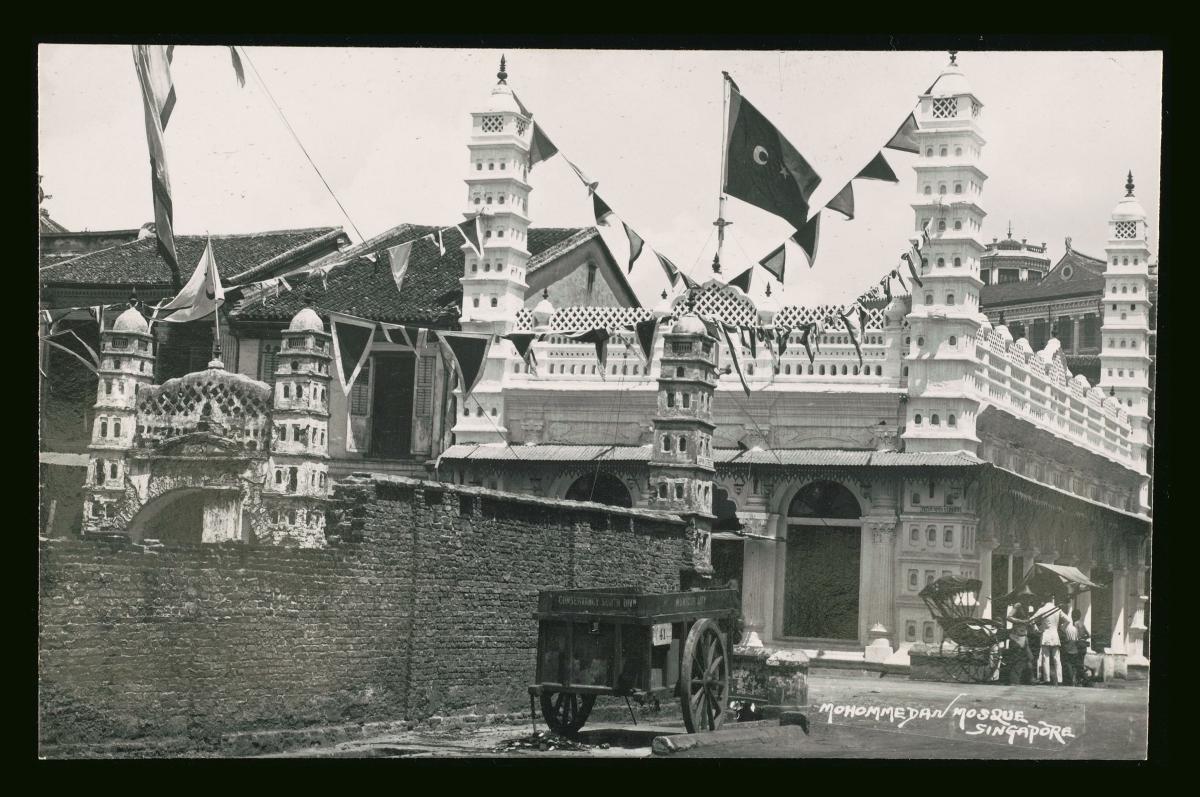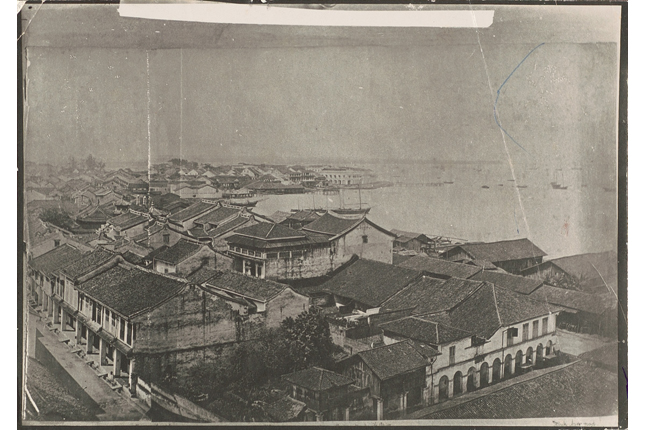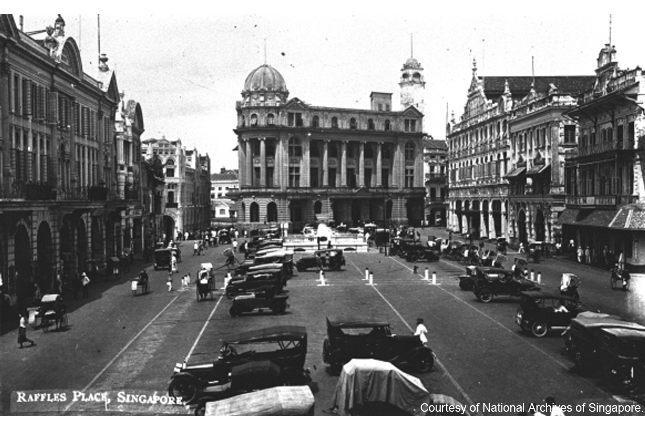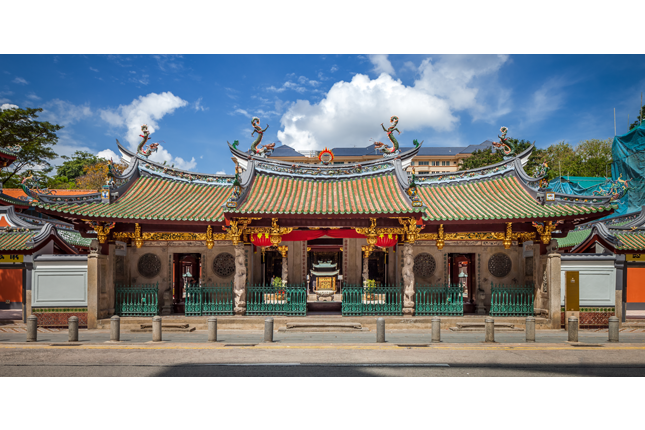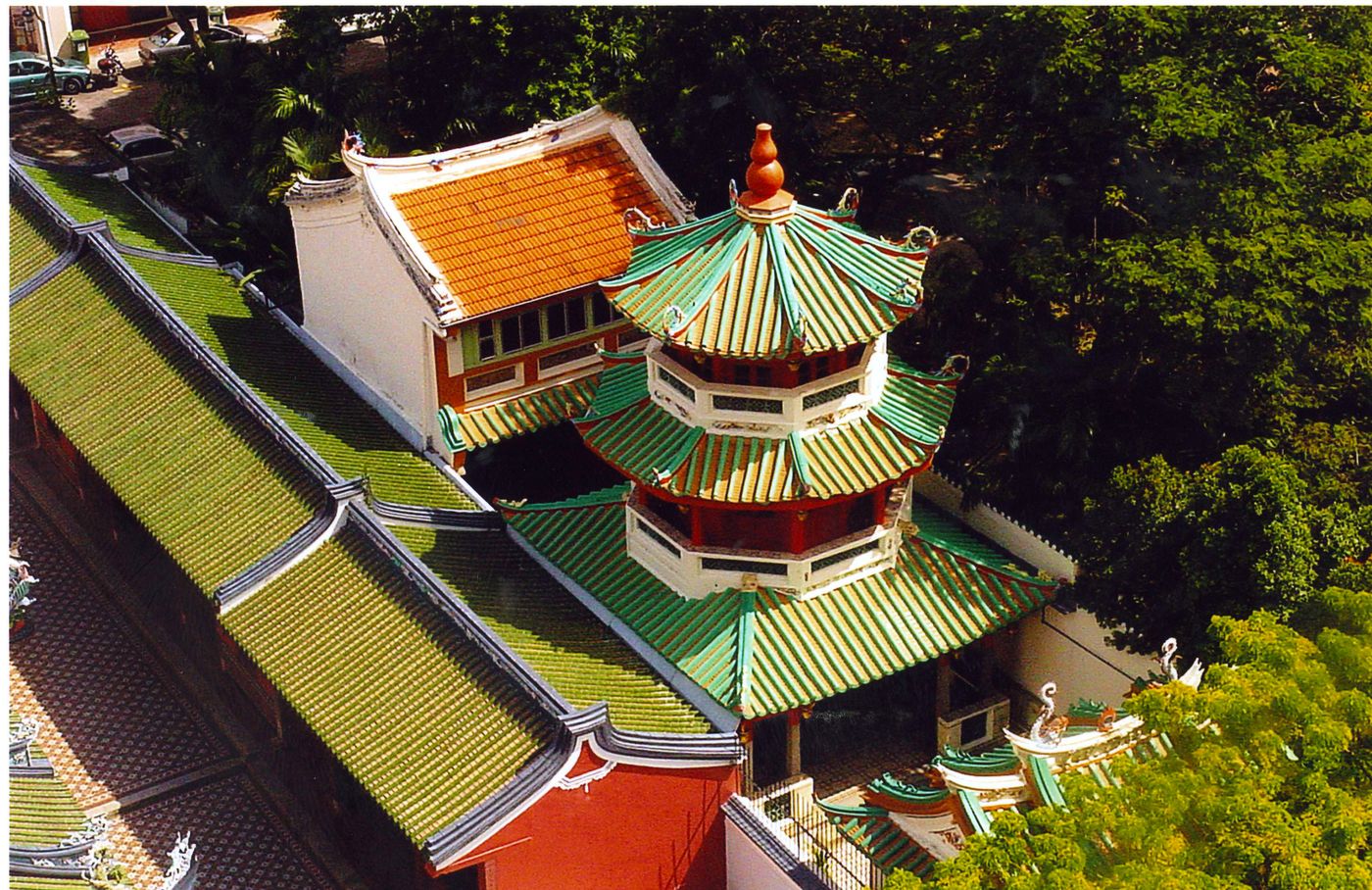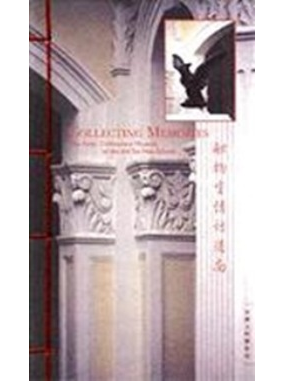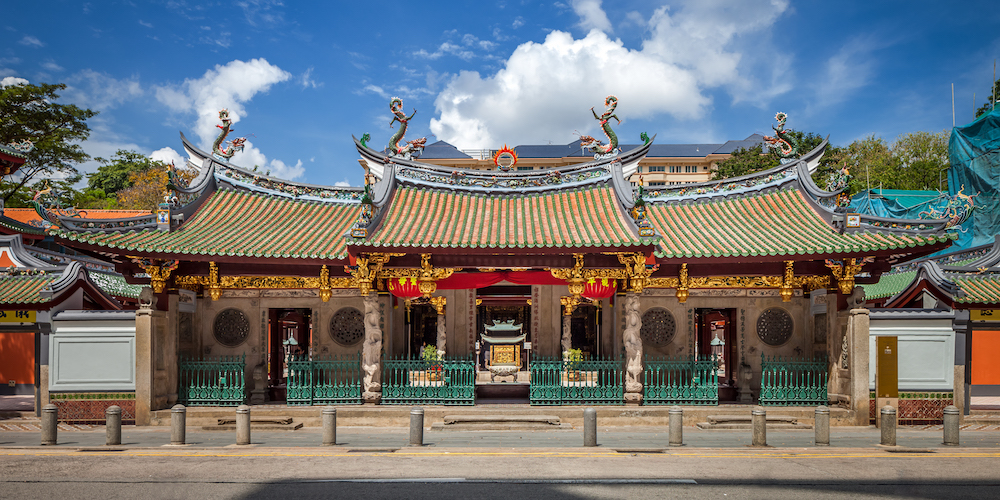Located on Telok Ayer Street, a short walk from Thian Hock Keng, the Former Keng Teck Whay Building, and the Former Nagore Dargah, Al-Abrar Mosque is one of Singapore’s oldest mosques. Also known as Chulia Mosque, the mosque serves as a constant reminder of the Chulia immigrants who once lived in the area and played a vital role in developing the budding economy of early colonial Singapore.
From Thatch to Brick
Founded in 1827, Al-Abrar Mosque began as a small thatched hut, which quickly earned its nickname Kuchu Palli (‘Hut Mosque’ in Tamil). It catered mainly to the Chulias, who hailed from the Coromandel Coast in South India and were mostly traders and moneychangers. Many settled and worked in Chinatown. The mosque was not only their spiritual refuge, but also a social venue in which the community could meet and interact.
Construction of the present brick mosque commenced in 1850. When it was completed in 1855, Al-Abrar Mosque came under the same panel of court-appointed trustees as two other places of worship managed by the Chulia wakaf (endowment), namely, Jamae Mosque and Nagore Dargah.
Expansion and Renovation
The mosque underwent a series of major renovations between 1986 and 1989. Originally a single-storey building, an additional floor and a large jack roof were added to enlarge the prayer hall. The courtyard between the entrance gate and the prayer hall was also covered up to form a gallery extension above. These developments would reportedly enable the mosque to enjoy a capacity of up to 800 worshippers at any one time – more than twice that before the renovations. Additional space was also acquired from the adjacent shophouse and converted into a prayer hall for women. Today, according to MUIS, the mosque has a capacity for 500.
Architecture and Furnishings
Al-Abrar Mosque is set in a row of shophouses, with a frontage of three shophouse widths. Incorporated into the façade is the five-foot-way, which seamlessly connects the mosque with the neighbouring shophouses. The lot lines of the prayer hall conveniently coincide with the qibla (the orientation to Mecca). Formerly confined to the central bay, the parapet was extended to both sides, lining the entire front façade of the mosque. The decorative merlon cresting of Al-Abrar Mosque is similar to that of Sultan Mosque .
Borrowing elements from the Indo-Islamic architectural style, the design of the mosque sets it apart from other shophouses in the vicinity. Two tall octagonal minarets flanking the main entrance – each crowned with the Islamic symbols of a crescent moon and a star – distinguish the façade as that of a mosque. These same minarets have been a visual landmark in the area since the mid-nineteenth century; they can be seen standing out prominently next to Thian Hock Keng in Percy Carpenter’s 1856 painting, ‘Telok Ayer Street as seen from Mount Wallich’.
In addition, the use of European Neoclassical features adds a touch of eclecticism to the mosque. The interior of the prayer hall is lined with Doric columns. Coloured glass panels were installed in the fanlights above the large French louvred windows. On top of the mihrab (which indicates the orientation to Mecca, towards which Muslims would pray) is a blue glass panel, with a verse from the Quran in Arabic:
In the name of Allah, most Gracious, most Merciful. Praise be to Allah, the Cherisher and Sustainer of the worlds, the most Gracious, most Merciful, Master of the Day of Judgement.
Al-Abrar Mosque Today
Al-Abrar Mosque continues to serve a largely Indian Muslim congregation today. Nevertheless, many Muslims from other ethnic communities who work in the offices nearby also worship at the mosque, especially on Fridays. It is now administered by the Islamic Religious Council of Singapore (Majlis Ugama Islam Singapura, MUIS).
Our National Monuments
Our National Monuments are an integral part of Singapore’s built heritage, which the National Heritage Board (NHB) preserves and promotes for posterity. They are monuments and sites that are accorded the highest level of protection in Singapore.




